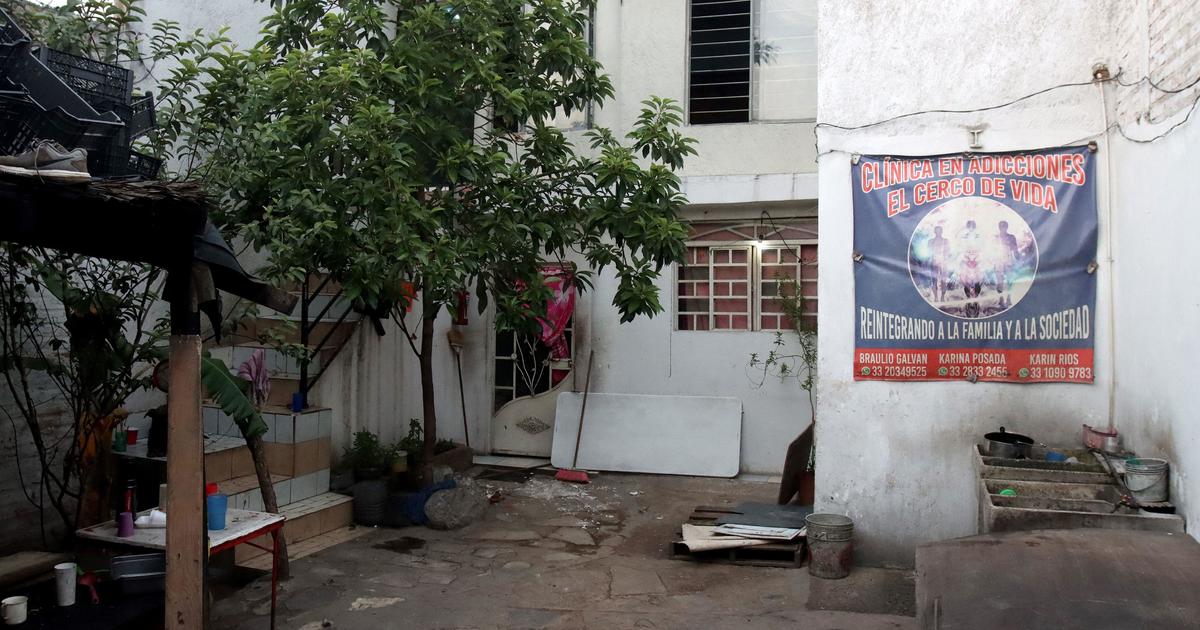[ad_1]
SIERRA GORDA BIOSPHERE RESERVE, Mexico — By early January, Germán Silva had run halfway across Mexico: 30 miles a day through the Sierra Madre, past befuddled cartel gunmen and bemused road crews, across vast stretches of ranch land where the cows, too, seemed to look at him askance.
There were moments when even Silva, one of the best long-distance runners in Mexico’s history, thought he might be nuts. Days when he couldn’t tell whether the greater threat to his four-month, 3,134-mile run was the terrain or his own, failing body.
He was 54. His two New York City Marathon victories were almost three decades behind him. His toenails were falling off. His left calf hurt. And his right hamstring. And basically everything else.
He was 1,574 miles into the journey, deep in the mountains of central Mexico, when I joined him last month for a day of running. Silva guessed we’d run 32 miles or so, but he wasn’t sure.
“I’m not feeling great. You’ll have to be patient with me,” he said so tenderly that I believed him.
I’ve been running most of my life. When I was 9, I had a poster from the 1994 New York City Marathon on my wall, the year Silva won it for the first time (despite making a wrong turn near the finish line). A few weeks before meeting him, I’d run my best marathon in 2 hours and 48 minutes. I was pretty sure I could keep up with him for a day.
We met the night before our run at a seafood restaurant 400 miles from the sea, decorated with plastic largemouth bass. I watched Silva limp up the few steps that led to the restaurant, as if he had just torn his ACL.
His body — tiny, tan and lean — seemed to disappear in his baggy sweatsuit. He looked like the human version of a swaddled gamecock.
Silva was trailed by a film crew that was documenting his journey, which he describes as traversing “the veins of Mexico.” The run, he says, is meant as a pivot away from the country’s narcos-tequila-and-beaches caricature; a nod toward something less Hollywood, less Instagrammed.
“This is Mexico!” Silva was known to exclaim spontaneously, pointing to a ripple of unnamed mountains, a stretch of desert speckled with wild agave, an abandoned hacienda whose centuries-old bell chimed in the wind.
At the peak of his career, he had used his fame to bring electricity to his rural village of Tecomate, delivering lightbulbs, fans and cold drinks to Mexico’s sweltering tropical lowlands. Now, he was trying another version of the same trick, his athleticism an arrow pointing toward his cause.
But the premise — and the documentary — was only viable if Silva could finish running. So the journey also became a study in physical endurance, and the body’s ability to recover while completing more than a marathon a day for months in a row.
At the beginning of Silva’s run, a doctor took a biopsy of his quadricep. At the end, another will be taken, so researchers can assess how the massive effort has changed his musculature.
Still, sometimes even Silva’s team — usually five or six people in two borrowed SUVs — could have a hard time parsing the rationale behind aspects of the journey. He often runs during the hottest hours of the day. He rarely checks the topography of his route. He tries to make his running shoes more comfortable by slicing holes in them with scissors. He’s gone through 18 pairs so far.
In an era of energy gels and endurance drinks, he’s consuming mostly mineral water, cacao and a traditional ground maize called pinole. He accepts dinner invitations from strangers, even when it means eating questionable seafood. He gets sick — a lot.
Instead of following a direct route through the country, Silva is running deep into rural Mexico, along dirt paths that disappear into the mountains. He logs his runs on Strava, but the global mapping software doesn’t recognize many of the unmarked trails. The mileage registers as an orange line slicing randomly through the wilderness, like the flight path of a hijacked airplane.
A few days before we met, he had run through a series of half-abandoned mining towns, leaping over cattle grates through a landscape where people had never seen anyone jog for exercise or sport.
The film crew had captured him greeting locals as he ran by.
“Buenos dias,” he said enthusiastically.
They stared back at him blankly.
All the running had taken its toll. When we walked back to our hotel, I watched Silva shuffle over the cobblestones. How can a man struggling to walk, barely able to climb a flight of stairs, run another 1,500 miles, I wondered.
“There’s going to be some uphill tomorrow,” he told me.
“How much?” I asked.
“I’m not sure. But it’ll go downhill, too, at some point.”
Every runner knows that when the running is going well, the effort seems to make a place more beautiful. Maybe it’s the endorphins. Maybe we’re just grateful to move quickly and with relative ease, and that gratitude flows from us, painting trails and roads in a flattering light.
Silva’s gait was short but efficient. The same body that struggled to walk could run with relative ease, an adaptation that in its own way proved the thesis of Silva’s project. His physiotherapist marveled at how Silva’s body had changed, his strong legs getting stronger.
I’d been training mostly in Mexico City, a polluted megalopolis of 21 million people, where a three-mile jog sometimes felt like an outtake from “Mad Max.” Running with Silva on a winding trail through the Sierra Gorda was a revelation. Did anyone else know these trails existed? His project suddenly made a little more sense.

(Photo by Luis Antonio Rojas for The Washington Post, video by TGC Production House)
Aside from the physical challenge, looking at his route on a map, I had wondered how the logistics of the trip were possible. Mexico suffered more than 30,000 homicides last year. They took place disproportionately in a handful of states, where cartels battled for influence. Silva was running through nearly all of them — including Guanajuato, where our dreamlike run had begun.
It struck me that after years of reporting on cartel violence, I had perhaps applied the exact bias to Silva’s route that he was hoping to eviscerate. Was I overestimating the risks? In the weeks before our run, Guanajuato recorded homicides every day: at a convenience store, a fruit market, a family birthday party. Two police officers were killed; a professor of geophysics; a four-month-old in her mother’s arms.
“Have you had any trouble with security?” I asked.
“Well, we’ve run into a few armed groups,” Silva said. “There was one a few days ago.”
Oh, I thought.
Not infrequently, Silva said, he has been stopped at checkpoints manned by cartel gunmen. Once, in Durango, cartel members poured into the hotel where he and his crew were staying, guns slung over their shoulders.
“The Chapitos,” the hotel receptionist explained casually to Silva, naming the cartel led by the sons of drug kingpin Joaquín “El Chapo” Guzmán, who is now serving a life sentence in the federal supermax prison in Florence, Colo.
But during each confrontation, Silva described his cross-country run, and the armed men let him continue on. In several cases, gunmen radioed ahead to other checkpoints, telling their comrades to expect a runner entering their territory. Sometimes Silva handed out running shirts to their children.
It wasn’t exactly a window into a peaceful nation, I thought. But Silva’s pitch was that actually, it was.
“If they know you don’t pose a threat to them,” he said, “they don’t do anything.”
We stopped for water under the largest cactus I’d ever seen. Out of nowhere, a pickup truck with Texas plates blew by us. Silva showed me a picture on his phone of the cartel leader whose territory he’d run through the previous week. They were smiling, their arms around each other.
There were other threats. Once, in Hidalgo, Mexico’s bullfighting capital, Silva was charged by a bull that had broken loose. He’d lost track of the number of almost-dog attacks. Several times, he found himself on trails so rocky and steep that even his four-wheel-drive support vehicle had to seek an alternate route.
About an hour into our Guanajuato run, Silva’s wife, Sandra Guevara, climbed down from the support vehicle to join us. He had been traveling with her and their 5-year-old daughter, Uri, who sometimes sprints the last few hundred meters of the day, screaming “I won!”

(Photo by Luis Antonio Rojas for The Washington Post, video by TGC Production House and Kevin Sieff/The Washington Post)
Our trail was the remnant of an old mining road that the Spanish had once used to ferry silver. We skirted a dry riverbed. The peaks on either side of us seemed to get bigger.
At mile 15, Sandra pointed ahead. The dirt road turned up the face of a mountain at what looked like a clean, 45-degree angle.
“Good luck, gentlemen,” she said, and soon jumped back into the support vehicle.
I tried to match Silva stride for stride up the mountain. I had told my editor that I could interview him while running, and I still had more questions. Silva chatted away effortlessly. I forgot my questions and focused instead on not dying.
Silva had grown up in the mountainous state of Veracruz, chasing slow-moving lorries up sloping country roads. As a professional runner, he trained by running up a 14,000-foot volcano outside Mexico City. Preparing for his cross-country run during the pandemic, he maxed out his treadmill’s incline.
“Hill work,” as runners call it, is where he thrives.
Transcribing the recording of that interview, I can pinpoint the exact moment I knew I wouldn’t finish the day with Silva. We were about 25 miles into the run. Silva saw what appeared to be the peak of the mountain.
“We should get some downhill after this,” he said.
But when we turned a corner, the road shot up another incline.
“No,” I can hear myself say faintly in the recording, like I’m drifting slowly out to sea.
From there, I followed Silva. First, I flailed behind him at a slower pace. Then I watched him through the windshield of a support vehicle.
Is he speeding up, I wondered, after he passed mile 30. It appeared so.
He finally stopped running at mile 33, near a gathering of pine trees. The sun had set. His team took out a folding chair.
“That was really hard,” he said, sitting down.
His face looked as if he’d finished a brisk walk.

Silva with his daughter, Uri, and his wife, Sandra, at a hotel in Tlaxcala on Jan. 18. After his run that day, he drank pinole in the four-wheel-drive support vehicle. (Luis Antonio Rojas for The Washington Post)
Since then, Silva has run another thousand miles — over Mexico’s snow-capped highest peak, then skirting the Gulf Coast before crossing into the Yucatán Peninsula, where the temperature neared 100 degrees. On day 93, he ran his 112th marathon through the Mennonite farms of Campeche, passing a cluster of women in straw hats and long dresses. He plans to finish on Feb. 20 in Tulum.
I ran with him once more after my disintegration in Guanajuato. This time, chastened, I told Silva I didn’t plan to finish the day with him. Mostly I just wanted to get a better sense of what kept him going, replicating over and over a feat I couldn’t manage once.
When Silva was a boy, chasing semitrailers up the hills of Veracruz, his father once admonished him for aspiring to be a professional runner.
“Running is not a profession,” Silva’s father said. “You are going to die of hunger.”
That line nicked at the small part of me that still wasn’t fully convinced of Silva’s stated reasons for running across Mexico — the attempt at showing the best of the country, the physiological research.
I knew those goals were valid. But watching Silva run — exuberant and effortless, day after day — I wondered if there wasn’t a simpler reason that was harder to say out loud. Maybe a version of why I joined him in the first place, the allure behind a very old, very simple and very difficult sport.
I wondered if he was running because he still hadn’t touched the edge of what his body could do. Not in a marathon, not on an Olympic track. Were the limits of his country’s borders any less arbitrary, assuming he could traverse them?
He knew he could. He would not die hungry.
About this story
[ad_2]
Source link













